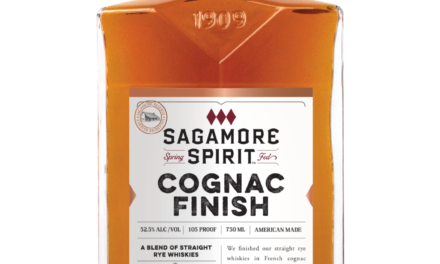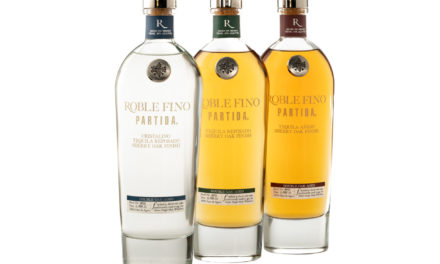The 21st Amendment, adopted in February 1933, may have officially overturned Prohibition, but it hardly silenced the debate over how alcohol can and should be bought or sold. COVID-19 has turned up the volume.
The Federal Alcohol Administration Act, enacted by Congress in 1935, let states adopt different sets of laws that created a “three-tier system” for the production, distribution, and sale of alcohol. The tiers refer to the producers/importers, distributors/wholesalers, and retailers. In effect, the system is a famously baroque maze of regulations, making ordering wine from XYZ Winery legal in one place, and illegal a mile away, across state lines.

“America’s wine and spirit wholesalers can expect to lose up to $924.1 million in uncollectable or difficult to collect receivables alone due to shelter-in-place.” —Michelle Korsmo, WSWA
Analyzing the intricacies in this space isn’t possible, but here’s a 30-second summary of what was on the books pre-pandemic: 31 states and the District of Columbia allowed off-premise retailers to deliver alcohol, while 23 states and D.C. allowed third-party companies to deliver alcohol for retailers, according to Wine & Spirits Wholesalers of America (WSWA). Three states—Alabama, Oklahoma, and Utah—prohibit the shipment of alcohol to consumers at all, and several others—including Delaware, Arizona, Arkansas, Georgia, Kentucky, and South Carolina—have stipulations that limit shipments. Most states only allow direct wine shipments, although Delaware, Massachusetts, Montana, North Dakota, Ohio, Vermont, and Virginia allow beer shipments, as well.
The three-tier system was erected to create safeguards to ensure lawful trade practices and the safe handling of alcoholic beverages before they get to consumers. While it’s an effective way to keep moonshine off the streets, it has, critics say, made it difficult for everyone in the country to have equal access to all alcohol.
COVID-19, which essentially revolutionized overnight the way Americans work and play, has drawn attention to some of these inequities.
Behind the numbers
The increased sales of alcohol—wine dollar sales are up 35.8 percent, spirits are up 38.6 percent, and beer and cider are up 28.1 percent year-over-year, according to Nielsen—are frequently touted. Yet, insiders such as Jon Moramarco, an economic consultant and the managing director of bw166, warned via the Wine Institute, a policy and advocacy group, that revenue losses for the country’s more than 10,000 wineries and 8,000-plus growers alone could reach $5.94 billion in 2020. Ninety-seven percent of all U.S. wineries produce fewer than 50,000 cases each and are expecting revenue losses of up to 66 percent this year, with the expected impact getting worse as production gets smaller.
That’s because people aren’t ordering drinks from small producers in restaurants or visiting tasting rooms and picking up bottles there. They’re shopping in grocery stores and at big box retailers, which often don’t shelve smaller producers, who often can’t get national distribution because of industry consolidation.
Wine and spirits wholesalers are hurting, too. “On-premise sales in April were down 85 percent for both wine and spirits,” says Michelle Korsmo, president and CEO of WSWA. “America’s wine and spirit wholesalers can expect to lose up to $924.1 million in uncollectable or difficult to collect receivables alone due to shelter-in-place.”
Many in the industry see an opportunity amid the transformation of recreational life in America, and the shortfall in state and federal budgets, to change the way alcohol is purchased and consumed—and, in the process, support smaller producers and pad state and federal coffers.
Temporary Waivers
The biggest change has been the loosening of restrictions across the country on beer, wine, and spirits to-go. A grassroots network of entrepreneurs-turned-activists, lobbyists, and bureaucrats saw takeout alcohol as an easy way to create revenue for producers and businesses in crisis, without requiring a massive legislative lift.

“Once beer drinkers get used to curbside pick-up and direct shipment to their houses, they’re not going to want to give that up.” —Paul Gatza, Brewers Association
“When I saw the cocktails-to-go trend taking off, I became an activist overnight,” says Benjamin Brown, owner and general manager of Satchmo’s Bar & Grill in Chesterfield, Mo. “I got nowhere with our mayor, so I turned to the governor’s office, gathered 4,500 signatures, reached out to state senators, and worked with a network of entrepreneurs who felt this was essential.”
His determination paid off. The first temporary waiver allowing cocktails to-go was implemented, and then extended again through June 15. Brown is now hoping to help get the legislation pushed through permanently (his isn’t the only state pursuing such measures).
“We’ve brought back several furloughed employees and our profit shot up 50 percent,” Brown says. “I don’t want to rely on handouts from the government and neither do our local distillers. Now, we’re all getting a fighting chance.”
One of Brown’s cohorts in the movement, Adam Tilford, founder and CEO of Mission Taco, with six restaurants across Missouri, also attests to the effect cocktails-to-go has had on his business.
“It means the difference of selling product worth $9,000 a day, and selling $6,000 a week,” Tilford says. “Because of having margaritas to-go, our food sales have gone up, we’ve reopened two stores that we had temporarily closed, and we’re able to employ 12 people in each store.”
At press time, 32 states and the District of Columbia are letting restaurants and bars sell either cocktails, bottled spirits, or both to-go. Eighteen states plus D.C. are letting restaurants and bars deliver spirits. Some states, including Texas, Florida, Oklahoma, and New Jersey, are considering extending the policies post-COVID.
Producers such as Paso Robles’ J. Lohr Vineyards & Wines, which depends on restaurant sales, are thrilled.
“We’ve been quite active in getting our wines featured in takeout menus in national accounts and small independent restaurants,” says the winery’s CEO Steve Lohr. “Our wines are selling well in this program and have been an important source of profit for restaurants, too.”
Permanent Changes?
Even states that historically had a relatively restrictive approach to alcohol distribution and shipping are loosening rules. Take Oklahoma, where full-strength beer and wine couldn’t be sold in grocery or convenience stores until SQ 792 passed a few years ago.
“In the wake of the COVID-19 pandemic, these regulations have been further loosened to allow for the delivery and curbside sale of alcohol to consumers,” says Matt Pinnell, lieutenant governor of Oklahoma. “This has been a lifesaver for restaurants, local breweries, and wineries that are having an extremely difficult time. About 90 percent of Oklahomans are employed by small businesses, so we’re seeing innovative and aggressive attempts to make these changes permanent here.”
The Distilled Spirits Council of the United States (DISCUS) is lobbying governors on a state-by-state basis to clarify and broaden their rules.
“While the provision for a partial reopening of restaurants for outdoor dining will be the first step toward recovery of Connecticut’s hard-hit hospitality industry, the road back to economic stability will be long and difficult for many months to come,” Chris Swonger, president and CEO of DISCUS, wrote in an open letter to Connecticut Governor Ned Lamont. “The opportunity for restaurants to sell beer, wine, and distilled spirits, along with cocktails to-go/mixed drinks for carry-out, would be another valuable economic lifeline for those businesses.”
Swonger is among the growing chorus of voices asking that these rules be extended beyond this immediate crisis.
“This pandemic is just underlining a long-term pattern in our culture,” Tilford says. “In recent years, more of our customers are shifting from dining in to taking out, and we have to use food delivery apps that take a 20 to 30 percent commission. I see that trend accelerating when this is over. Allowing cocktails for delivery is an easy way for us to try to maintain profitability.”
Paul Gatza, senior vice president at the not-for-profit advocacy group the Brewers Association, says it’s working on the state and federal level to ease brewers’ ability to get their beer to thirsty fans.
“Our first priority was getting allowances for curbside pickup,” Gatza says. “The sharp and sudden decline in business at taprooms, stadiums, concert venues, and other spaces means a lot of beer that was already delivered in kegs went to waste. Right now, we’re focusing on relief packages and working on a state-by-state level, because the genie is kind of out of the bottle here. Once beer drinkers get used to curbside pick-up and direct shipment to their houses, they’re not going to want to give that up.”

“This environment has created a huge generational change in three months.” —Joe Brettell, Prosody Group
“This pandemic is changing consumer behavior, and even when things have reopened, restaurants are going to be operating at less capacity than before and more shopping is going to happen online,” says Steve Gross, vice president of state relations for the Wine Institute. “Wine tourism will be slow to return as visitors will likely travel locally rather than get on an airplane in the coming months if and when they decide to venture out.
“Our mission has always been to support consumer choice. We don’t want to do away with the three-tier system, we want to augment the licensing privileges of the final tier.”
Capitalizing on Shortfalls
As the size of the budget shortfalls across the country increase, some say changes that could pad state coffers may be welcome.
For the first two quarters of 2019, states collected $3.5 billion in alcohol taxes, according to the independent nonprofit Washington, D.C.-based Tax Foundation. The National Conference of State Legislatures is tracking adjusted 2020 state revenue projections, and many states are saying they will miss their budgets by hundreds of millions. Some, including Illinois, Kansas, Maryland, New York, and Pennsylvania, are estimating they’ll be billions behind.
Joe Brettell, a partner at management consulting firm Prosody Group, predicts a “let’s make a deal” atmosphere in D.C. when the dust settles.
“This environment has created a huge generational change in three months,” he says. “Old school wineries are adopting DTC models and conducting virtual tastings because their previous routes to market are dead and wine country is shut down.”
Developments in the DTC shipping laws are perennially fraught, and this year has been no exception, says Daniel Posner, director of the board at the National Association of Wine Retailers, and owner of the White Plains, N.Y., shop Grapes the Wine Company.
“My baby for the past 10 years has been DTC,” Posner says. “I was sleeping better before this Michigan decision,” he says, in reference to the United States Court of Appeals for the Sixth Circuit’s April ruling that a Michigan law preventing out-of-state retailers from selling wine to consumers online—while allowing in-state merchants to do so—is constitutional.
Critics say that not only did that ruling overturn a district court decision from 2018, it seems to contradict the spirit of a 2019 Supreme Court ruling, Tennessee Wine & Spirits Retailers Association v. Thomas, which overturned the state’s law requiring people who want a license to sell wine to have lived there for at least two years.
“It’s horrifying that they would rule in this fashion,” he says, calling it “foolish and a misuse of the spirit of the Supreme Court’s ruling, and it amplifies the pressure on small producers who were already facing an uphill battle due to consolidation in the wholesale space.”
Smaller producers, even ones with serious connections, such as Aloft Wine and Dark Matter in Napa by the Mondavi family, are hitting a wall with classic, three-tier distribution.

“Ours is one of the only industries required to comply with laws largely written in the 1920s.” —Alycia Mondavi
“Many of our distributors won’t be seeing suppliers through the end of the 2020 calendar year,” Aloft CEO Alycia Mondavi says. But she’s been quietly working behind the scenes in D.C., alongside Napa Valley Vintners (where she sits on the board) to effect real, widespread change that will enable more DTC sales.
‘There’s Hope’
“Just prior to the shelter-in-place order, I was in D.C. to advocate on behalf of Napa producers across a wide range of issues,” Mondavi says. “Ours is one of the only industries required to comply with laws largely written in the 1920s. But there’s hope. Look at the state of Kentucky, where DTC rules were eased. As soon as we can, my sisters and I will be there to build relationships and bring more tax revenue into the state.”
The Wine Institute has worked for three decades to transform how people get and consume wine. In 1986, no state other than California allowed DTC shipping. Now, some level of direct shipments reach more than 95 percent of the U.S. adult population, with the exception of Utah, Mississippi, Delaware, and Alabama.
Gatza says the Brewers Association hopes to work, as the wine industry has, state-by-state and at the federal level to ensure that brewers can ship their product to hop heads in every state.
A century after Prohibition, an unexpected virus may help overturn or ease rules industry pros have been battling for decades.











